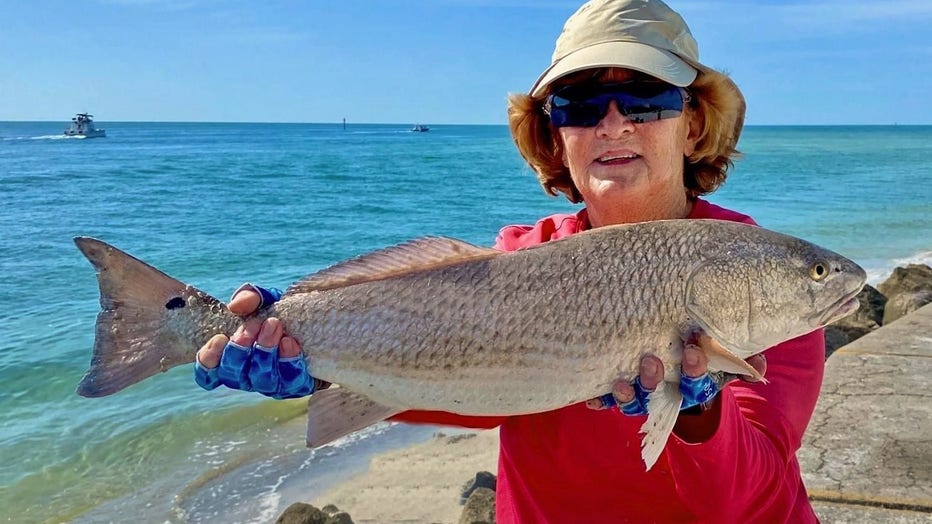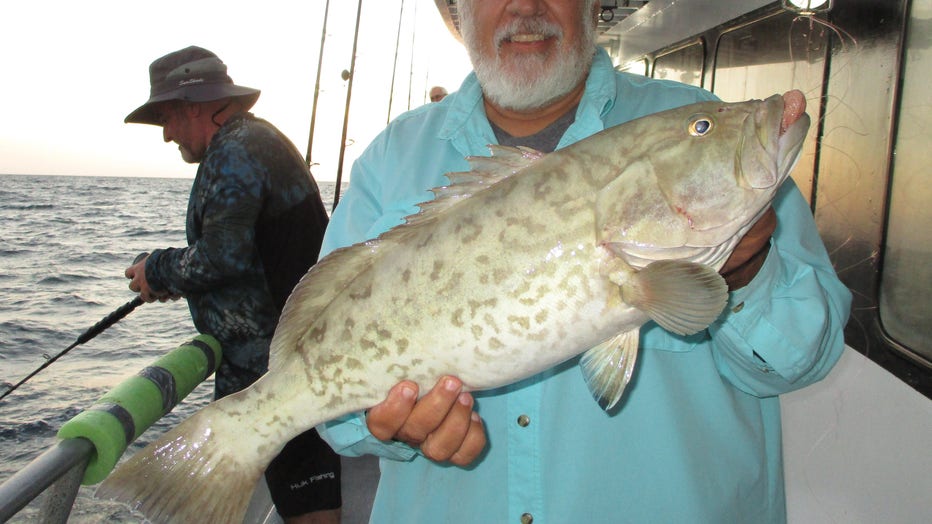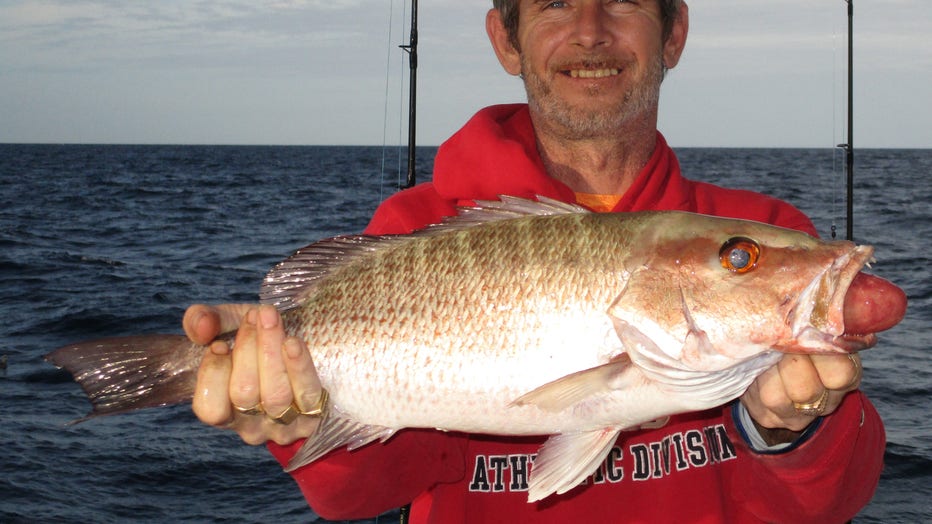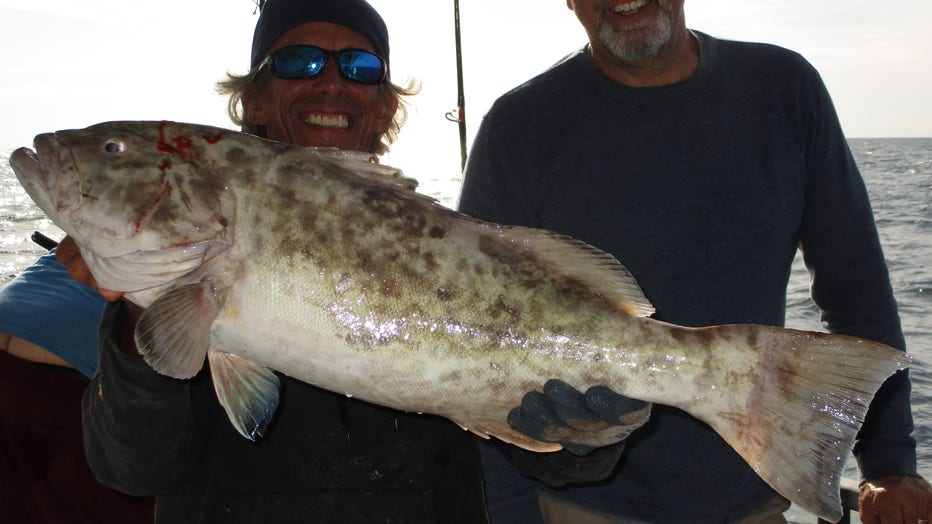Fishing Report: Nov. 12, 2021

Cooler waters bring more trout action inshore
Trout action has picked up a bit throughout Tampa Bay with the cooler temperatures. The active trout bite can be found around the bays, river mouths, canals, and flats, says Captain Dylan Hubbard of Hubbard's Marina.
MADEIRA BEACH, Fla. - Every Friday morning, Captain Dylan Hubbard of Hubbard's Marina joins Good Day to fill viewers in on his fishing forecast as we head into the weekend.
Here is his fishing report for November 12, 2021.
Inshore
Snook action was solid this past week despite the sporty conditions to start the week. These fish love a bit of adverse conditions as it makes it easier for them to ambush baits being stirred up by the weather.
Plus, the changing pressures seemingly get them excited as well. There are still some snook around the passes and on the beaches, surprisingly, despite the now cooler weather and cooler water temperatures. We are seeing most of the fish back in the bay at this point, but there are still some stragglers making the night bite around dock lights, bridge lights, and other structural areas with lights to attract bait active.

Snook (Credit: Hubbard's Marina)
Flair hawks, soft plastics, and free-lined live bait are all great options around those lights at night and into the early morning hours. During the day, the structures are still holding fish, but the best areas are now moving to the canal dock lines -- especially those canal points that are adjacent to the flats or passes where water is moving and baits are present.
Grass flats, mangrove shorelines, and oyster bars are also good areas to find the snook. These guys are extremely smart and opportunistic, so they are going to be staged up in an area to ambush passing baits while expending the least amount of energy. So, pay attention to where the tide is pushing the bait.
If you're fishing a flat that runs north and south and the tide is moving from east to west you know the fish are going to be stacked on the western edge of that flat or a dock on the western side. Wait for the bait to come to them and then you’ll want to get down tide, cast up tide and work your lure with the current -- never against it.
Redfish bite has slowed a bit in the area but there are still some nice ones being caught around those mangrove shorelines at higher tides, grass flats through the tidal range and around those oyster bars at mid-to-lower tides. Look for these guys where the mullet is moving or around the potholes and cuts adjacent to these areas.

Redfish (Credit: Hubbard's Marina)
Slow-moving soft plastics are king throughout the day and night for redfish. However, in low light conditions, the topwater lures work extremely well and produce a very exciting bite with fish popping the lure at the surface.
Trout action has picked up a bit throughout Tampa Bay area. Cooler waters bring a more active trout bite around the bays, river mouths, canals, and flats. They tend to get into small groups and feed consistently in a small area where they can feed easily on passing prey items. Live shrimp, greenbacks, and soft plastics are all great options for the trout locally.
Flounder are picking up around the area still, especially on sandier bottom areas adjacent to the flats or structures. They will be right on the bottom waiting for prey to venture to close to their sandy hideout. Mud minnows are a favorite bait for the flounder, but they will eat shrimp and whitebait too. Plus, like any inshore species, soft plastic paddle tails or imitation shrimp are great lure options.
Sheepshead action has really been hot lately and will only continue to improve as the water temperatures continue to drop. We are seeing these guys around docks, piers, bridges, jetties, and the rock piles of Tampa Bay.
In deeper waters, the jig heads are working well for the sheepshead. In shallower waters, the minimal weight, like a split shot or even free-lined small pieces of shrimp close to the pilings, are a great option to target these fun to catch sheepshead. Also, fiddler crabs are a great option in either shallow or deeper waters as well, but you must be quick as the sheeps will crush and remove that fiddler crab in a hurry from your hook if you are not paying attention.
Mangrove snapper are starting to thin out more and more in the inshore waters with the cooling trend in full effect and the sheepshead pushing out the mangroves around local structures too. However, you still have a chance to see these guys around local structures while targeting the sheepshead.
Near shore
Gag grouper are starting to pick up for us near shore. This past week, behind the weekend front, we saw a big push of gag grouper to near shore waters.

Gag grouper (Credit: Hubbard's Marina)
Plus, towards the end of the week, prior to the incoming front, it seems more showed up or they got more active. We have been catching them as shallow as 40-60 feet of water, but a majority of the action is in deeper near shore waters past 60 feet of water and deeper.
Live pinfish is the best option for them but with the big red tide and weather, it has been super tricky to find the pinfish in good concentrations.
Hogfish action is also picking up nicely around the area. We had nearly twenty keeper hogfish on the Thursday 10-hour all-day and the half-day trips have been seeing a few here and there as well. It’s a great time to get out there with the lighter tackle near shore and live shrimp to target these unique-looking great tasting fish.
Mangrove snapper action is also going well near shore around 50 feet of water, and deeper we are seeing some solid mangroves. Look for them with live shrimp, greenbacks or the cut threadfin chunks and double snell rigs. Typically, you can use the same hogfish setups for the mangroves with around 30lb floro and about 4ot hooks working well.

Mangrove snapper (Credit: Hubbard's Marina)
We are still seeing some mackerel near shore and some nice kingfish mixed in especially a little deeper near shore around 50-80 feet of water. Look for them around the local artificial wrecks or reefs where the bait is present. We are seeing them around bigger ledges and natural structures too where bait is present.
Offshore
The gag grouper fishing is just on fire offshore right now around these cold fronts.
Right ahead and directly behind the fronts, we are seeing the most active gag grouper bites near shore. It’s a great time to get out there and target these gags between fronts when the water calms enough to make it out.
They are loving the active live baits. Most like big pigfish, pinfish, or some of the big live baits we catch offshore like white grunts or the porgies you can legally use for baits too. Look for the best gag grouper action around 120-180 feet of water with the big tackle.

Gag grouper (Credit: Hubbard's Marina)
Scamp grouper action is going well out deeper closer to 160-200 feet of water, and we are catching them best while targeting mangrove snapper with threadfin. However, small pinfish works super well too. Also, small diamond jigs around 4-6oz work extremely well for the scamp grouper.
Mangrove snapper action is going extremely well offshore too. We are seeing them on the cut threadfins and the double snell rigs. They are super aggressive and been large overall.
Vermillion snapper, porgies, almacos, and other heads and tails biting well out deep as well on cut threadfins and small chunks of squid too. It’s a great time to get plenty of action while fishing offshore and targeting mangrove snapper on dead baits.
Pelagic action is still going well offshore, especially the blackfin tuna. We are seeing these guys while dropping down baits to bottom fish and we are seeing them while trolling and flat line fishing too. Kingfish action going well offshore too, but the tuna seem to be most prevalent.

Blackfin tuna (Credit: Hubbard's Marina)
DON’T BE A FOOL, bring a venting tool & descending device
Keep in mind the importance of dead discards and discard mortality when engaged in near shore or offshore fishing. How many do you know right now that are all for catching and releasing snook, redfish, and trout but will be the first in line to kill a mangrove snapper, gag grouper, or red snapper? But the attitude completely changes when discussing these offshore species?
Plus, the same person inshore that will hold their breath and wet their hands before handling a breeder snook will go offshore and then cull through 20 red snapper before keeping their two red snapper they deem large enough to fill their two-fish bag limits. Meanwhile, the other 18 they released will often end up suffering fatal damage if not properly descended or vented?
Please help us to spread the word on the importance of descending or venting your released fish. Descending devices are most easy to use and quick to pick up on their use. They are most effective for most anglers.
However, an expert and precise angler with proper training and tons of experience can use a venting tool properly with similar outcomes. A venting tool requires you to pierce the fish while most descending devices are much less invasive. While using a venting tool, it is imperative you pierce them in the exact right spot, and you do not go but a quarter-inch or less in the fish. Most venting tools require you to ‘choke up’ on the tool to prevent over-penetration into major organs.
When fishing deep water, especially in the hot summer months, please make sure to treat all fish intended to be released like that breeder snook inshore and minimize the time it takes you to get him from the bottom to the boat using heavier proper tackle, not an ultra-light spinning reel.
Then once onboard, minimize the time out of the water. Then use a proper de-hooking tool and then, for the love of God, use a descending device or venting tool PROPERLY to ensure that fish has a chance to live another day.
Three things will help ensure the survivability of those fish released offshore:
- Making sure they are brought up quickly and do not expend all their energy in the fight.
- Make sure they are unhooked smoothly, easily, and as quickly as possible.
- Finally, make sure they spend the least amount of time at the surface at negative pressures where barotrauma exponentially increases its effect with each passing second.
Also, keep in mind when the water is warm, there is less dissolved oxygen content and the chances of barotrauma increase even more while its effects can be even more deadly.
LINK: Here’s all the information and more on barotrauma and how to mitigate that fatal damage to your future offshore catch
**Note: I recommend the Salt Strong articles at the bottom of the page under ‘webpages.’ I helped them develop those personally.
STATE SURVEY to improve recreational data and access
It is imperative that you have your Gulf Reef Fish survey endorsement on your fishing license.
You should get one if you are a private recreational angler or diver fishing from a private boat anywhere in Florida who intends to harvest, attempt to harvest or possess one or more of the following reef fish species: mutton snapper, yellowtail snapper, hogfish, red snapper, vermilion snapper, gag grouper, red grouper, black grouper, greater amberjack, lesser amberjack, banded rudderfish, almaco jack, gray triggerfish, Gag grouper, Red grouper, Scamp grouper, Mangrove snapper, Lane snapper, Kingfish, Tuna, or Mahi mahi.
Here is all the information and more on that program and how you can sign up.
TERMS OF REFERENCE:
INSHORE – from the back bays out to the bridges and including right on the beaches
NEAR SHORE – From the beaches out to 20 miles, or up to 100ft of water
OFFSHORE – from 20 miles or 100ft and beyond
For more fishing reports, photos, videos and more check out Hubbard’s Marina on Facebook, Instagram, YouTube, or Snapchat. Just simply search "HubbardsMarina" and do not forget our family motto, "If you’re too busy to go fishing, you’re just too busy!

